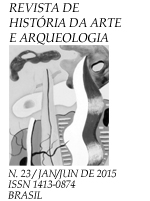Abstract
The Amazon rainforest has been represented in different ways throughout history. This is also true regarding its soils. How the soil was understood had a direct implication on how the landscape and the forest were perceived, which had agricultural implications, a determinant factor for the region’s development. This
article presents an analysis of three different views regarding Amazonian soils, the context in which they were embedded and their key consequences. The third view, which gained strength in the 1980s, embraces a pluralistic Amazon, breaking with the homogenised first and second views, allowing culture to play a bigger
role in the past and consequently in the future of the Amazon.
References

This work is licensed under a Creative Commons Attribution 4.0 International License.
Copyright (c) 2020 Joana Bezerra, Pedro Paulo Funari, Thomas W. Kuyper


